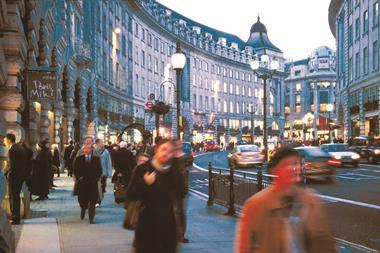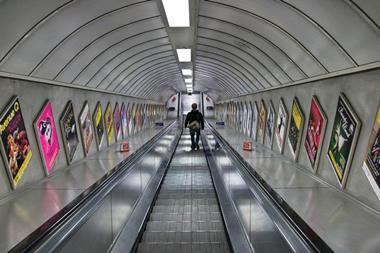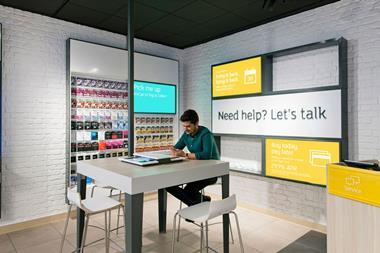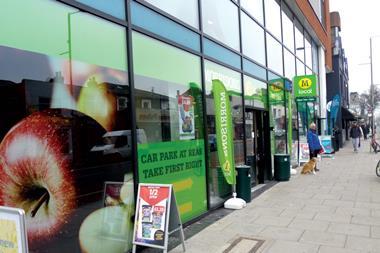Landlords across Europe are drilling down into their customer data and piloting digital innovations to discover how modern shoppers want to connect with physical stores. Mark Faithfull reports

Not surprisingly the challenges and opportunities that have emerged from multichannel retail have been occupying the minds of landlords across the Continent. And in an age of little new centre development, refining multichannel strategies has been afforded a prominent place in asset management planning.
Some of Europe’s leading developers and landlords are embracing digital technology in their malls, using shopping centres as test beds and conducting market research to gain insights into what customers are after.
Approaches vary markedly. A large study by Amsterdam-based Redevco on consumer behaviour led the company to establish a dedicated unit to investigate changes in consumer shopping habits and retailers’ performance.
“Our findings suggest that consumers see strong benefits for the physical store in terms of experience and service,” says Redevco head of research Marrit Laning. “When it concerns price and efficiency-related factors they opt for online. Therefore, it is not only retailers that increasingly use the store as a branding and experience tool, it is the added value of the physical store for the consumer as well.”
“While many landlords are intending to launch free wi-fi, it remains an ambition rather than a completed objective”
Neville Moss, CBRE
Neville Moss, head of EMEA research for property agent CBRE, points out that while many landlords are actively looking at their strategies, the volume of initiatives in action is somewhat less advanced. “It’s probably fair to say that retailers are a little ahead of landlords, who for the most part are being reactive, while the UK tends to be ahead of mainland Europe,” says Moss. “What’s interesting from our most recent research is that while many landlords are intending to launch apps and free wi-fi, it remains an ambition rather than a completed objective. That is changing fast. Most say they will have these in place within the next two years but we’re not there just yet.”
Ross McCall, head of retail commercialisation at Cushman & Wakefield, takes up the point that discussion is running ahead of implementation: “In the newer malls we are seeing the best of that digital integration. What’s fascinating is the existing stock and how technology can be effectively implemented within those centres,” he says. “We’re still experiencing change and while some have their solutions in place, others do not. There is also the issue of how new digital activity is funded, marketed or asset managed.”
The right ideas
Some landlords are moving step by step, others are launching comprehensive pilots. For example, last spring, Germany’s largest landlord, ECE, created two “interactive shopping experiences” at Alstertal-Einkaufszentrum, Hamburg and Limbecker Platz, Essen. The pilots came after a study by ECE and Roland Berger Strategy Consultants, which analysed the purchasing behaviour of about 42,000 consumers.
“Developments that are well received by the customers will be continued and implemented in other centres. Ideas that don’t appeal to the customers will be replaced by new ones,” says Henrie Kötter, managing director of centre management at ECE. “We asked ourselves, what can we learn from online retailers?”
ECE’s two Future Labs are testing an exhaustive list of services, including a free app with a points and voucher system; a mega-screen ‘Mall Wall’; virtual kids’ adventure ‘The Giants’ Journey’; a 3D guiding system ‘Your Way2go’ and an ‘Info Gate’ service where staff answer visitors’ questions via live video stream. Virtual mall avatar ‘Gloria’ is also on hand to communicate via a touchscreen.
Similarly two of the world’s big three shopping centre owners - Westfield and Unibail-Rodamco - have hived off their innovation into ‘labs’, while UK/French developer Hammerson is also dipping its toe into new services. Retail portfolio director Peter Cooper says: “We have launched a trial app, looking to connect tenants around a central hub. The key is to make it easy for people to browse but also to try and retain some control and connect online time with store time.”
A digital leader
Intu is testing the world’s first digital piano bridge at Intu Watford. More than 100,000 people a week put their musical skills to the test during the trial, with many keen to show off their skills to their friends on social media straight afterwards.
Another of its latest initiatives is to use digital hoardings as an interactive home page for its new transactional website, allowing shoppers to buy from the screen and then collect from the centre. The screens, which look like giant iPads, are being piloted at Intu Lakeside and Intu Watford. They are supported by the landlord’s own free wi-fi network, which enables it to own the collected data.
Since launching free wi-fi across more than half of its shopping centres, a million people have connected to the service. The remaining centres will be wi-fi-enabled in 2014.
During the past year, the landlord has invested £8m in its new transactional website and mobile site. Intu’s digital strategy forms the central platform of its rebranding from Capital Shopping Centres.
The Kudos app launched at Highcross, Leicester and The Oracle, Reading in October. Debenhams, New Look, Levi’s, Aldo, TM Lewin, Crabtree & Evelyn, Carluccio’s and Patisserie Valerie were among the first retailers to join the scheme. Hammerson expects to roll the app out to a further 10 centres in the near future.
Portuguese-based international shopping centre operator Sonae Sierra has embarked on a strategic repositioning, ranging from online sales and loyalty programmes to the introduction of new eco-brands to its tenant mix, and the enhancement of customer services such as gyms and health services. It is working to integrate digital communications - from free wi-fi access, charging stations and digital directories, to communication tools such as websites and integrated apps, plus social media.
In November 2012, online discount site Sonae Sierra launched PromoFans in Portugal and a year later in Spain - an initiative consisting of an online discount platform linked to the tenants within its centres.
“This is the first online platform that incorporates physical contact with the product before the purchase, creating a shopping process that begins on the internet and concludes at the store,” says marketing officer Patricia Gross.
In November last year, Sonae Sierra also opened a trial digital lounge at Hofgarten Solingen shopping centre in Germany, called ‘Hofgarten On’, with a view to rolling it out in other centres and geographies. The 390 sq ft digital lounge contains several online platforms for customers, along with information, news content, games, centre information, plus free wi-fi, charging stations for smartphones and devices, as well as seating.
While Gross acknowledges the slower impact of ecommerce in southern Europe, she points to recent growth and adds: “We foresee that over the next few years the share of online commerce will grow and will reach levels similar to those of other European countries.”
The new landscape
Crucially, shopping centre owners need to get a handle on the likely future impact multichannel retailing will have on investments, says CBRE Global Investors European Shopping Centre Fund fund manager Florencio Beccar.
Late last year, Beccar led research into the growth in multichannel retail, and the company is now assessing its own portfolio using an ecommerce Rental Impact Simulator [e-RISC] tool, developed as a result of the research, and that assesses both online and practical risks for shopping centres.
“Ecommerce is certainly not the end for traditional retail and it is far from doom and gloom but this process has been crucial in enabling us to understand how best to optimise our portfolio,” says Beccar.
The challenge for everyone remains the same - to predict future requirements. Moss reflects: “One of the big questions is how malls will need to be reconfigured and certainly many are looking at dedicated parking bays for click-and-collect and most landlords are now acknowledging that social media is essential, although our research suggests not that many consumers are engaging with digital technology as yet.”
Cooper believes that for many shoppers, traditional issues remain of most importance. “We’re definitely seeing that move towards the hospitality industry, with concierge services and also service where people want it, so, for example, we’ve got roaming digital information pods in some of our shopping centres,” he says. “The feedback we receive from social media is amazingly useful. It means that, for example, if customers are tweeting about long delays out of a car park, with fed-up kids in the back, we can try and resolve it.”
And as technology becomes even more sophisticated and advanced, customer satisfaction will improve, according to Cooper.
“It’s about ensuring the connectivity never falls down, that it’s quick and convenient.
We’re just on the cusp of what is going to happen with the next generation of technology,” he concludes.


























No comments yet